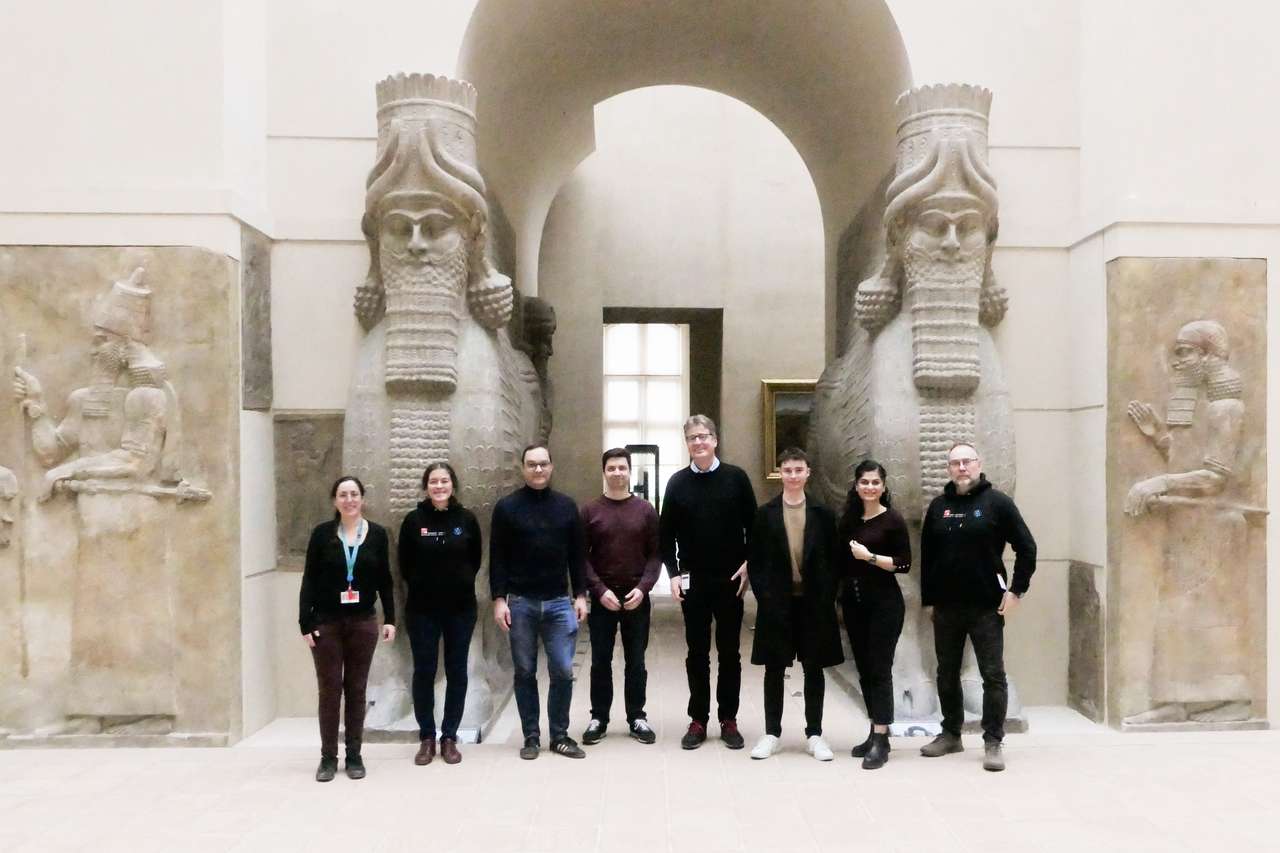ENCI at the Musée du Louvre in Paris
Creator: Andreas Schropp
Cuneiform tablets
In early February 2024, a new mobile tomographic X-ray scanner made its first scientific excursion to the Louvre in Paris to shed light on the inside of many thousands of years old cuneiform tablets. Cuneiform is the very first manifestation of human writing, produced by imprinting cuneiform letters into soft clay. It was discovered in Mesopotamia and about 13,000 tablets are preserved in the Louvre. However, 400 of them, letters or contracts, are still enclosed in their envelopes, much like letters today indicating for example details of sender and recipient. With the small but important difference that the envelope was also made of clay. Hence, as nobody wanted to damage or destroy the often artistic clay envelopes, the letter’s written content has remained hidden until today, much to the frustration of many scientists active in ancient oriental studies and specifically Assyriology. As cuneiform tablets are precious and fragile they are not normally allowed to leave the museum. That’s why the X-ray scanner has to come into the museum.
ENCI
So within the cluster of excellence at Universität Hamburg ‘Understanding written Artifacts’ (UwA), a team of physicists, engineers and technicians from DESY (Deutsches Elektronen-Synchrotron) set to design and build a mobile tomographic X-ray scanner. UwA is a large scientific collaboration between humanities, mathematics, informatics and natural sciences from Universität Hamburg, DESY and CNRS (Nanterre, France). The instrument was named by ENCI (Extracting Non-destructively Cuneiform Inscriptions), in homage to Enki, the Sumerian god of underground freshwater and wisdom. A main experimental challenge was to reconcile the radiation power required to penetrate a clay tablet with the lightest possible radiation protection. In the end, ENCI weighs 420 kg, including 200 kg of tungsten X-ray radiation shielding. As it was to be used in museums in Germany, France or Turkey, the X-ray scanner was designed to be modular such that it can be assembled and dismantled in places that are difficult to access otherwise. The entire tomographic scanner can therefore be divided into eight separate parts that can be carried by people. As a standalone system it integrates the whole measurement pipeline, from data acquisition and pre-processing, fast tomographic reconstruction and 3D data visualization on site!
Field trip to Paris
ENCI has passed its first test at the Louvre in Paris with flying colors giving the entire team an exciting scientific adventure, from transporting all the equipment in a small van from Hamburg to Paris during intensive strike periods of french farmers, carrying of all boxes through the Egyptian exhibition rooms in the Louvre, setting up ENCI up in a jigsaw puzzle fashion in the storage rooms of the Louvre, obtaining excellent tomographic data on twelve contracts and administrative texts from the end of the 3rd and the beginning of the 2nd millenium BC, briefly visiting the main Louvre exhibition in the evenings and enjoying great french coffee and food during this very special measurement campaign.
See photos!
